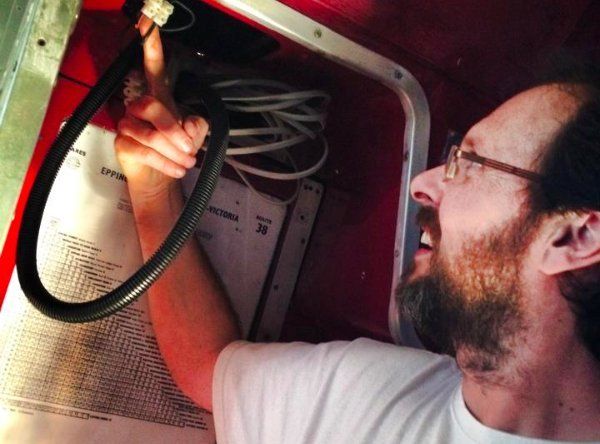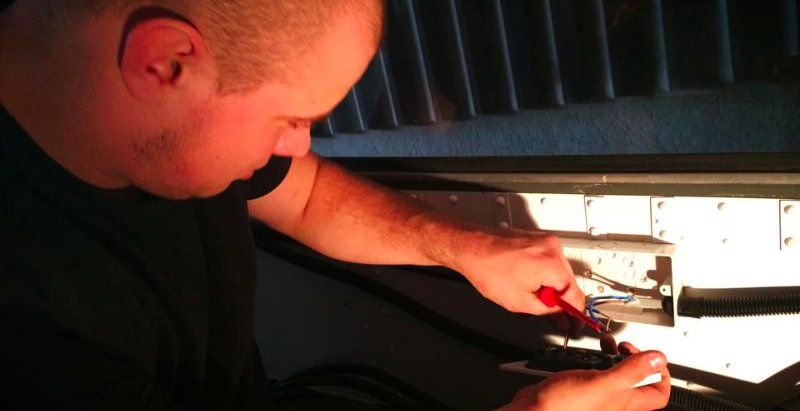So, it was time to face the inevitable. Electrics! It’s an obvious thing to do at this stage because you can run all your cables in good safe places before you start filling the bus bar full of equipment.
The biggest problem with getting certain jobs done on this mobile bus bar build was to find the right guy for the job. I had two meetings with two different specialist electricians that either never got back to me or didn’t think they could do the job. So, what do you do when you run out of options? You turn to your friends!
Enter RMES Electrical!
Two good friends of mine are domestic electricians. They do bathrooms, kitchens etc etc.. Automotive electrics are usually a little different but Ron and Paul (RMES) decided they were happy to give me a hand. Ultimately I recon they now wish they’d never agreed to it because it was a total pain in the rear but they came through with flying colors!
Just to give you an idea what they were up against, here is a list of all the bits that needed to be powered and wired in.
- The 2 larger draught beer coolers.
- Four CCTV cameras, upstairs and downstairs and recording unit.
- Sound system upstairs and downstairs
- Till systems
- PDQ system (card machine)
- LED strip lighting
- Stair lights
- Saloon lighting upstairs and downstairs
- Rear platform lights
And now for the old bits. I am very fortunate that RML2355 retains its original lighting inside both decks. A lot of buses were converted to horrible strip lighting like our second bus RML2730. The best bit about the original bulbs is that they have that beautiful warm 60’s glow to them. Now, if I was going to run passengers around I’d need that lighting on whist driving and to have these lights on I’d need to run the engine. As a mobile bus bar we need those lights on when people are sipping their cold drinks and the engine is off. To change this around we had to solve two major problems.
1. Where do we find a transformer big enough to power all these lights (we couldn’t get to the light fittings themselves, they’re buried deep in the bodywork)
2. How were we going to split that circuit
Ron bravely stuck his hand into the bird nest style wiring and started to see what was what. The problem with this gig was that it’s very straight forward to alter a nicely laid out and color coordinated loom. It’s not so easy to attack one that’s, first of all from 1965, has lost all its colors and on top of that, been rigorously chopped into more than some celebrities faces!
At our lowest point… we were reduced to Ron shouting to me: “What does that do?”. Then re-connecting the next wire and so.. At some points all the lights where flicking on and off and it felt as if I was at a very strange disco….
Eventually we did actually get it sorted. But the wattage issue still remained. I got my research hat on, grabbed my laptop and went to work.
On the beloved Routemaster Forum I found a bulb that looked exactly the same as the original equivalent but had LED’s inside it instead! Ok, so an LED is nothing new but these bulbs were not any old from the corner shop. In fact I’ve been told that London Transport made a unique size of bayonet fitting for their buses to stop punters taking the bulbs home for their personal use! They were nearly a tenner each and there are lots on a Routemaster bus but it meant that the wattage went down to 1.5 per bulb instead of about 22! That’s a significant drop. This then meant we could use a normal transformer and BINGO, we had light without the engine on!
More electrics on our mobile bus bar next week!







